The Tolomeo Lamp, the innovative spring lamp by Michele De Lucchi
“If I had understood how I designed the Tolomeo I would have designed others.” is the joking phrase that designer Michele De Lucchi (Ferrara, 1951) seems to have said in reference to the success of his most famous lamp, the Tolomeo precisely, designed together with Giancarlo Fassina (Milan, 1935) in 1987 and which has become one of the most famous icons of Italian design, a symbol of the essence of the union between functionality and aesthetics, a classic of contemporary design.
The story of the Tolomeo lamp began in 1986, when Ernesto Gismondi, founder in 1960 of Artemide, one of the world’s best-known lighting companies, with which De Lucchi had already collaborated, asked the designer from Ferrara to modernize the traditional arm lamp, such as the Naska Loris, Jacobsen’s very famous creation, designed in 1933 (and later became so famous that it became part of the... Pixar logo, which takes its inspiration from the Naska Loris precisely). It seems that the idea for Tolomeo came to De Lucchi, who moreover owned a Naska Loris (for him it is one of the most beautiful lamps ever designed), by observing a fisherman at work with his fishing rod: the starting point was always the idea of the spring lamp, but the goal was to hide the mechanism. “When a fisherman fishes with a line,” De Lucchi said in aninterview with Archiportale magazine, "he always needs to support the tip of the rod, that’s how, for example, trabucchi work, the ancient fishing machines widespread especially in Puglia, in which the rods used to support the net are held by a series of ropes. It seemed clever to me that, with a small lever arm and a cable, you could suspend a rod to which you could attach something. That was the reference I had in mind when I designed the Ptolemy."
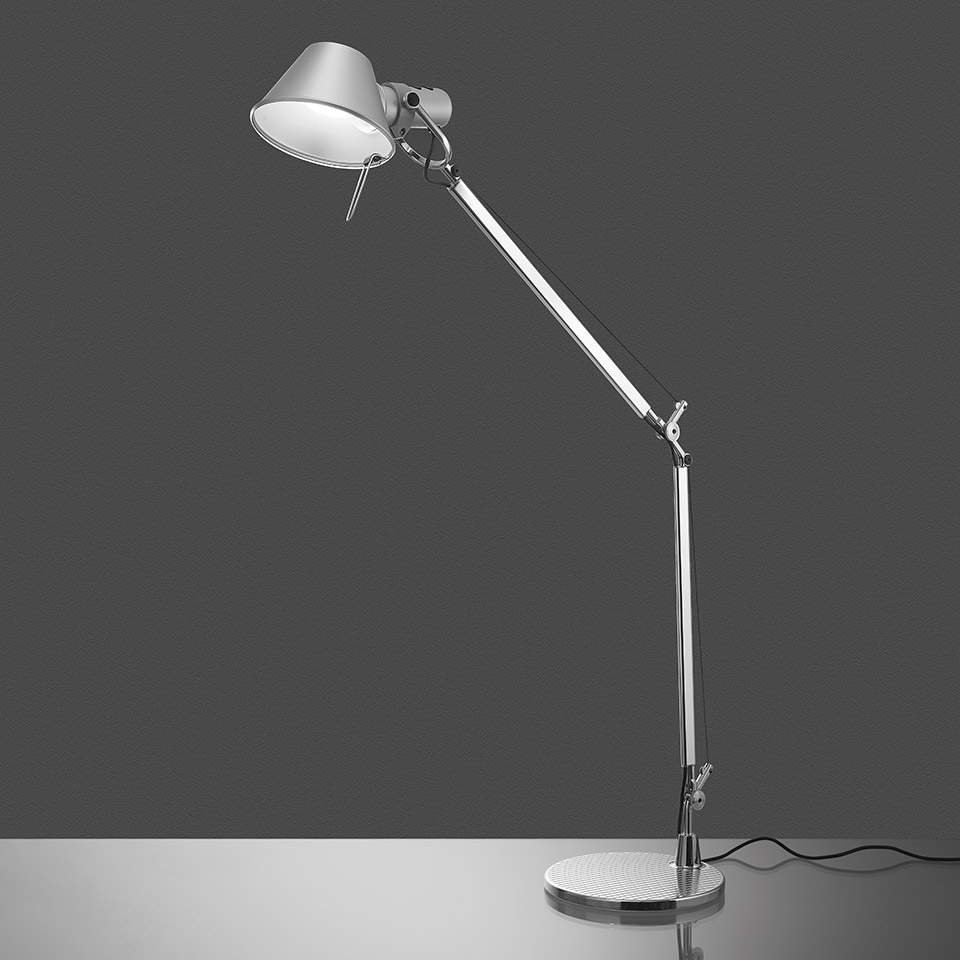
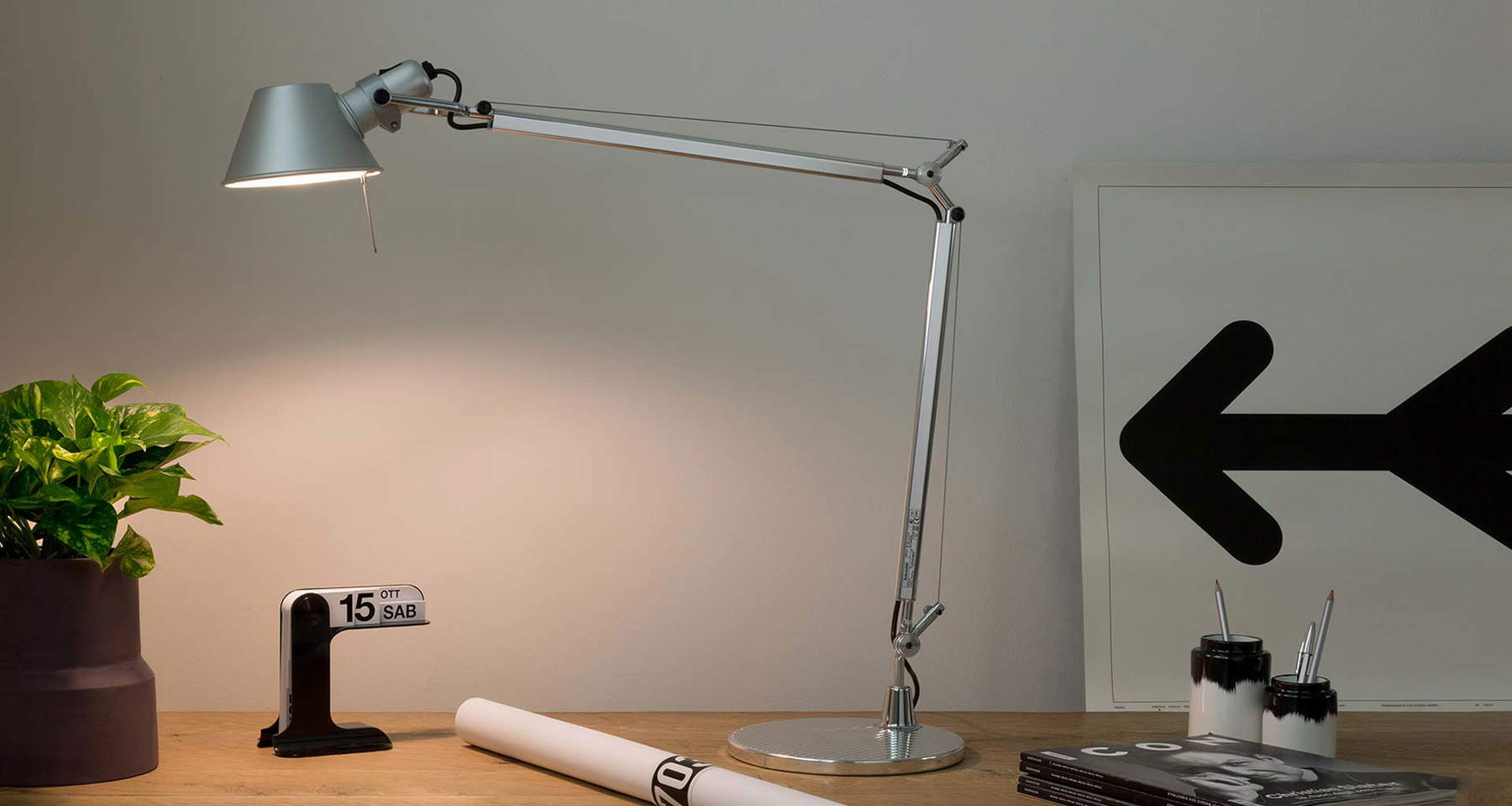
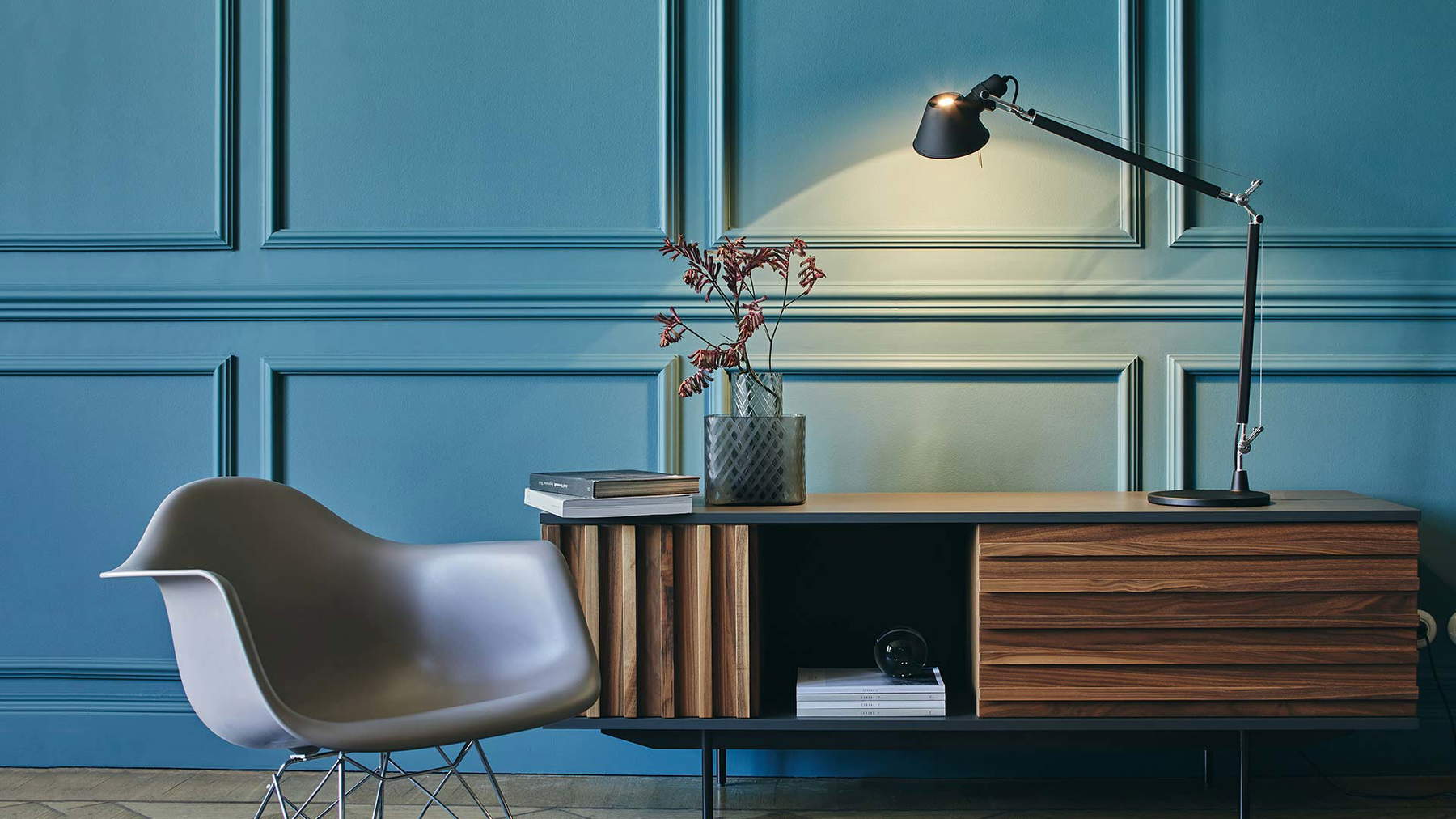
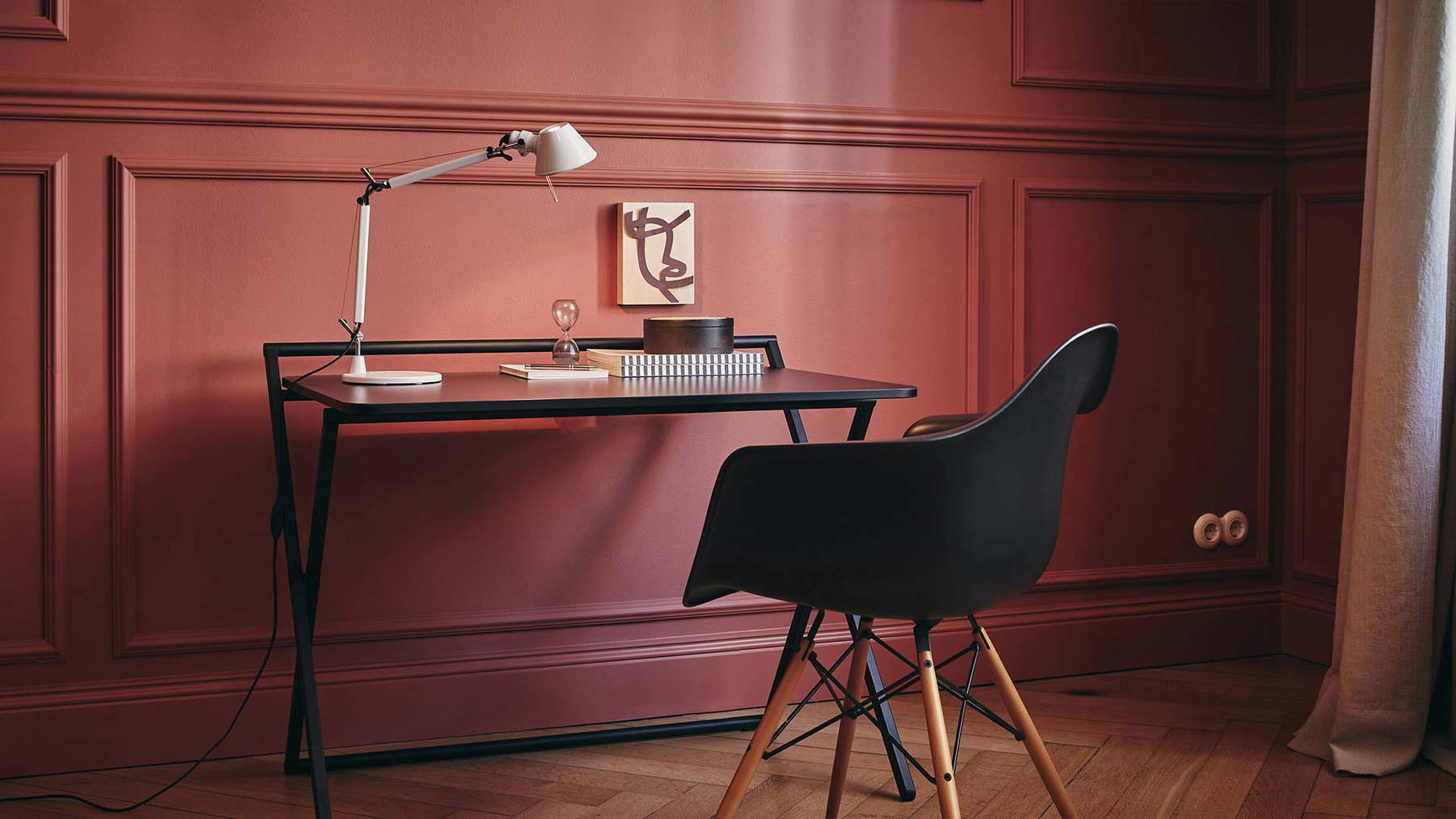
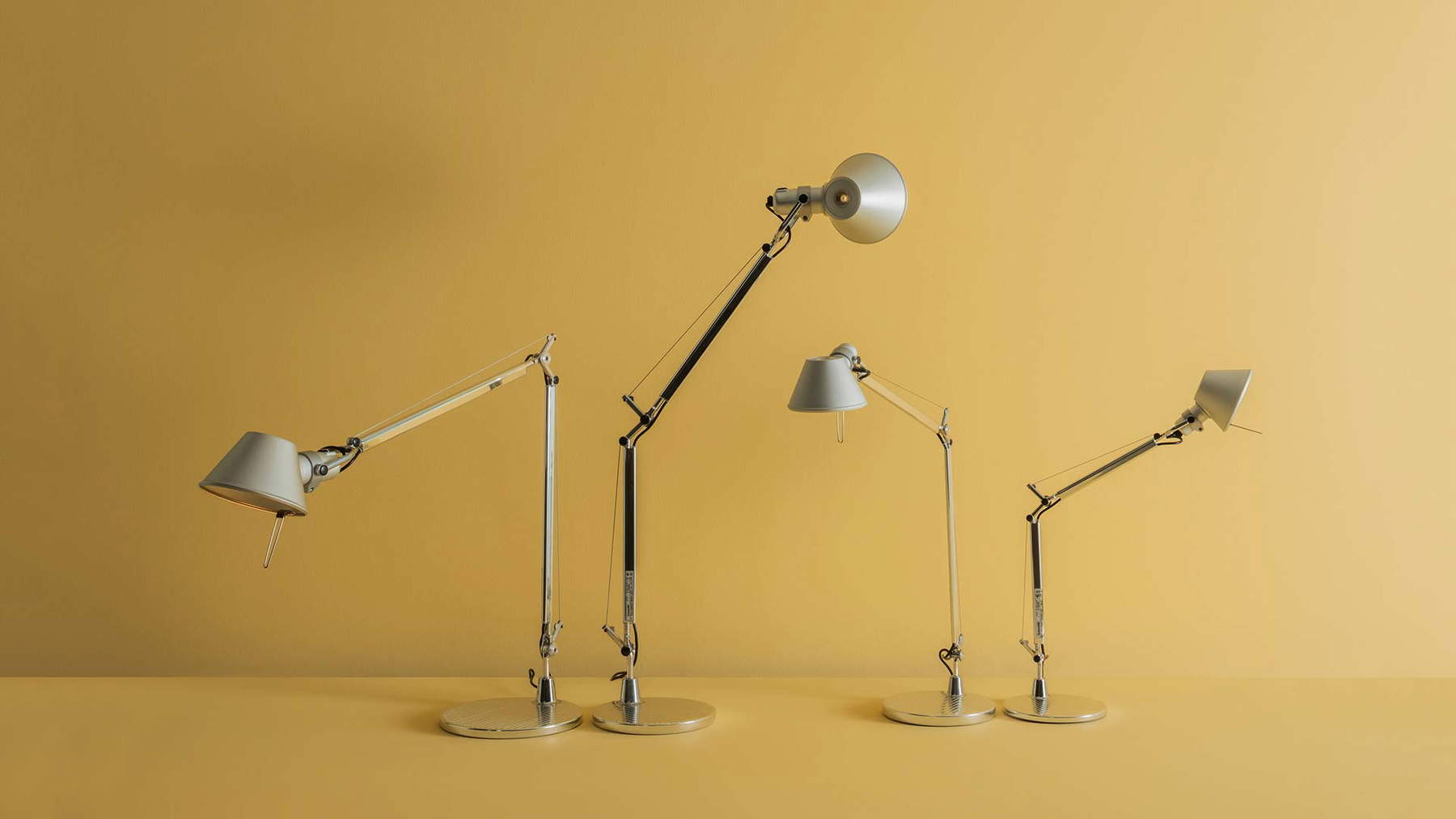
Like any arm lamp, Tolomeo was created to meet the need for directional light to meet the needs of those who work, read or write at the table. And with its slender and articulated structure, Tolomeo allows the intensity of the light and the direction of the light beam to be adjusted with extreme precision. It is precisely the adjustment system that is based on a spring mechanism that allows the arm and consequently the diffuser to be oriented in different directions and fixed in the desired position.
The base of Tolomeo consists of a metal disc that provides stability to the lamp and makes it easy to position on any surface. From the base of the Tolomeo then departs a slender and articulated arm, also made of aluminum, composed of two tubular elements connected by cables and joints: this is the system that De Lucchi and Fassina invented to modernize the traditional spring mechanism. The two designers, writes Silvana Annicchiarico in her book 100 Objects of Italian Design, “opt for a material as light as aluminum and intervene above all on the load-bearing skeleton of the object, replacing the traditional steel springs with cables and joints that keep the lamp in balance, while concealing and disguising their operation.” The springs are there, but they cannot be seen: they are in fact placed inside the arms, put under tension precisely by the external steel cables, which therefore allow the springs to work by enabling the movement of the arm.
The structure devised by De Lucchi and Fassina makes it possible to adjust the position of the lamp precisely and fluidly, allowing the light to be directed in any direction and transforming this object, Annicchiarico writes again, “from time to time,” into “a drawing lamp, a table lamp or even, should the user wish, an ambient light generator.” Thus, Tolomeo has quickly established itself as an ideal solution for lighting workplaces such as offices, studios, bookcases and desks, but also for lighting domestic environments such as living rooms and bedrooms.
At the end of the arm is the diffuser, also made of aluminum, which diffuses the light emitted by the light source. The diffuser can be oriented and adjusted in different positions to allow direct or indirect lighting as needed. The essential shape of the diffuser, an inverted truncated cone, is designed to optimize light diffusion and minimize glare. In addition, De Lucchi and Fassina introduced an innovation in the reflector, thanks to the inclusion of a fork that allows the light to be directed when the lamp is on, without burning your fingers. And, again unlike the Naska Loris, De Lucchi and Fassina inserted a cooling hole above the bulb.
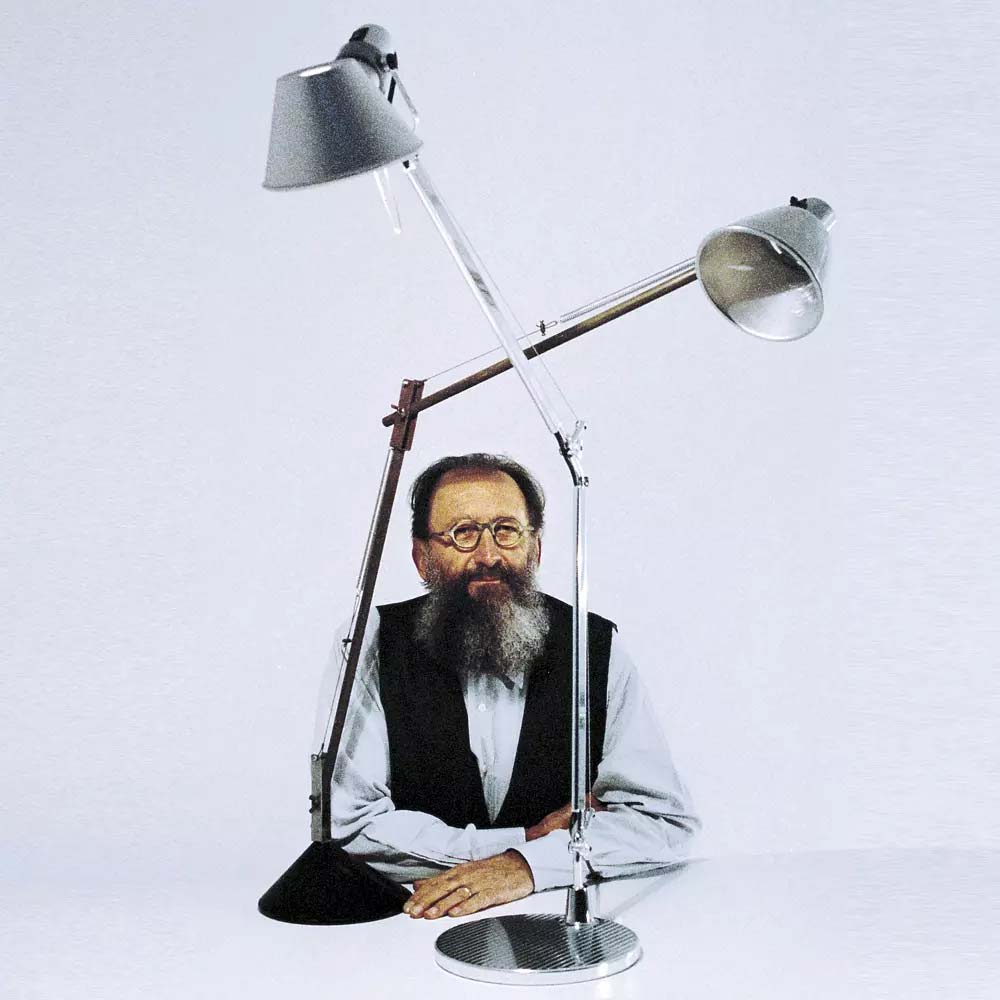
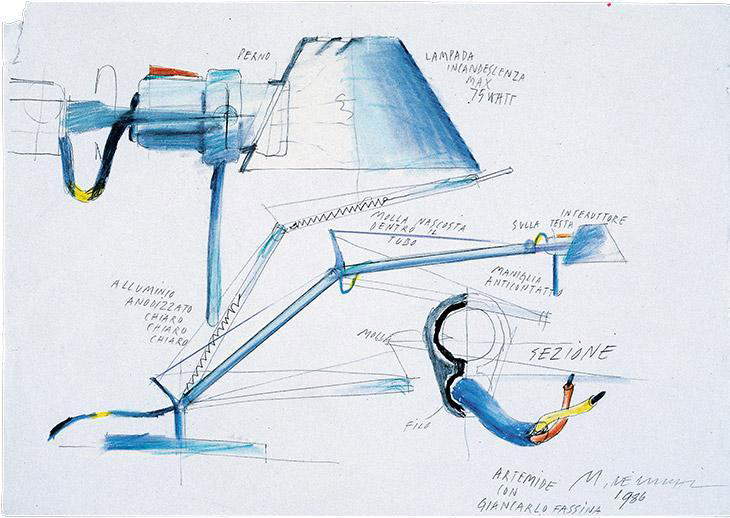
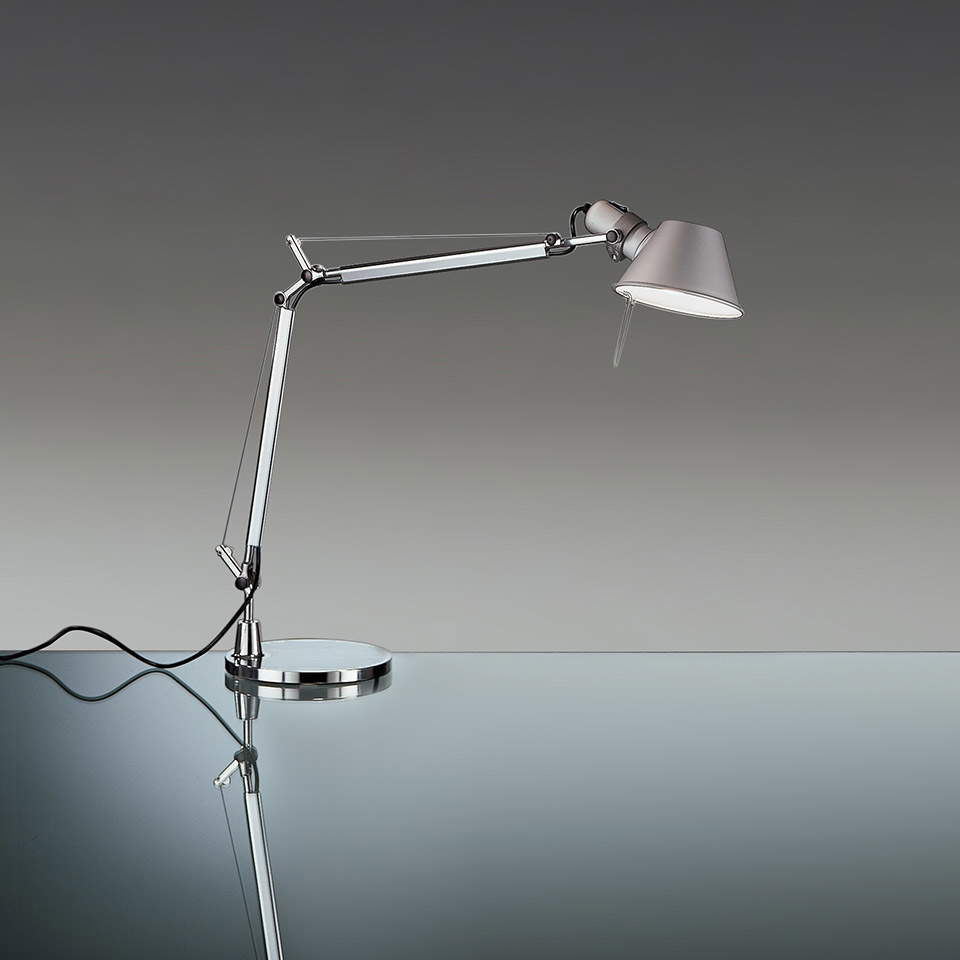
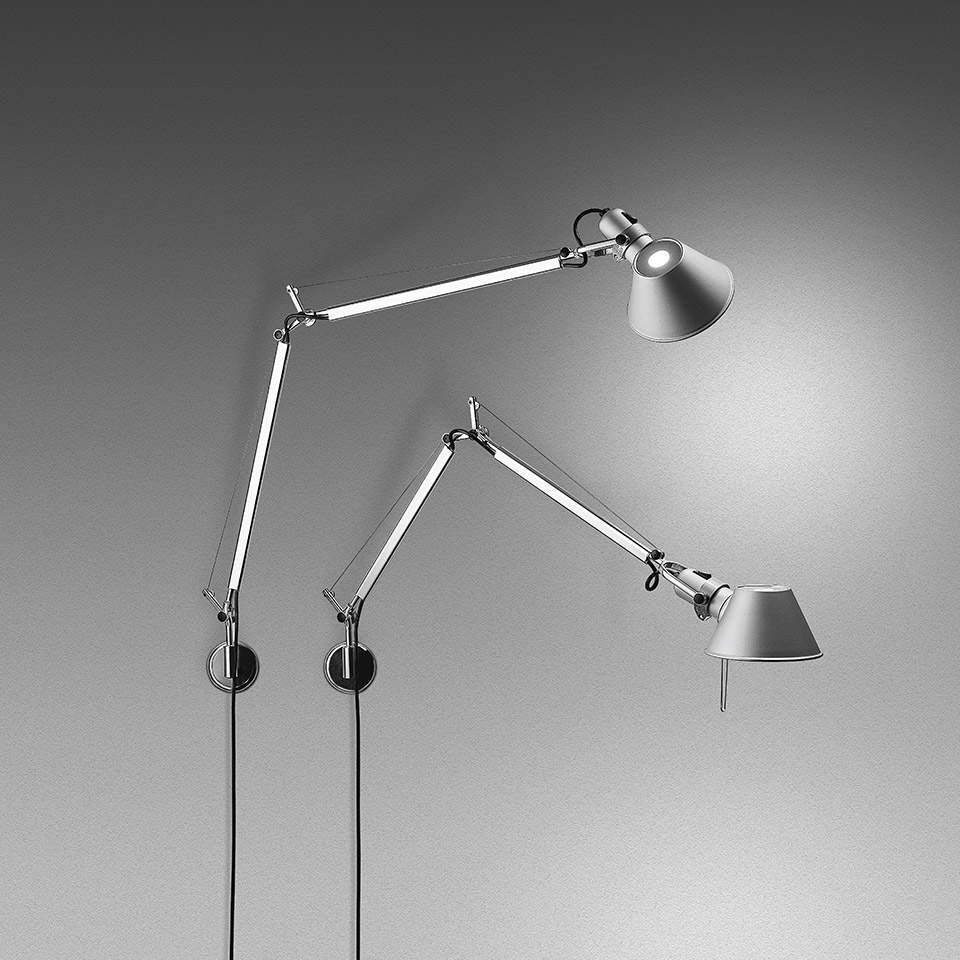
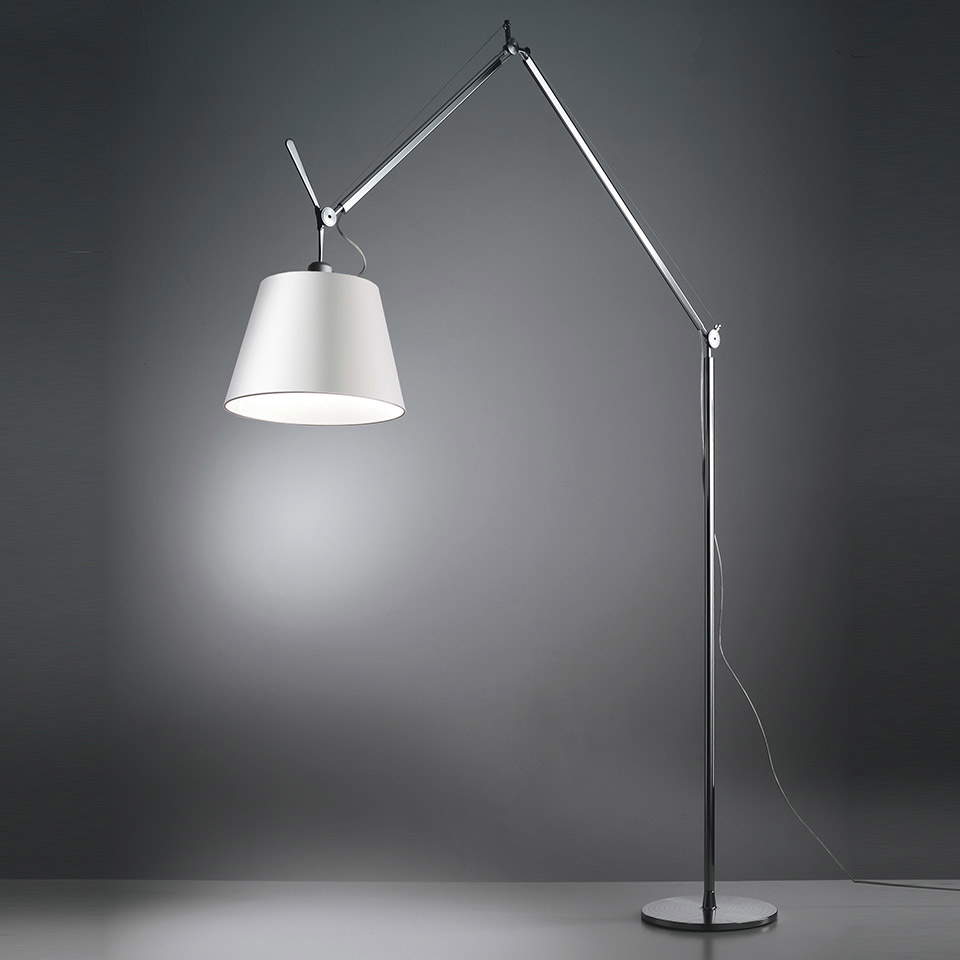
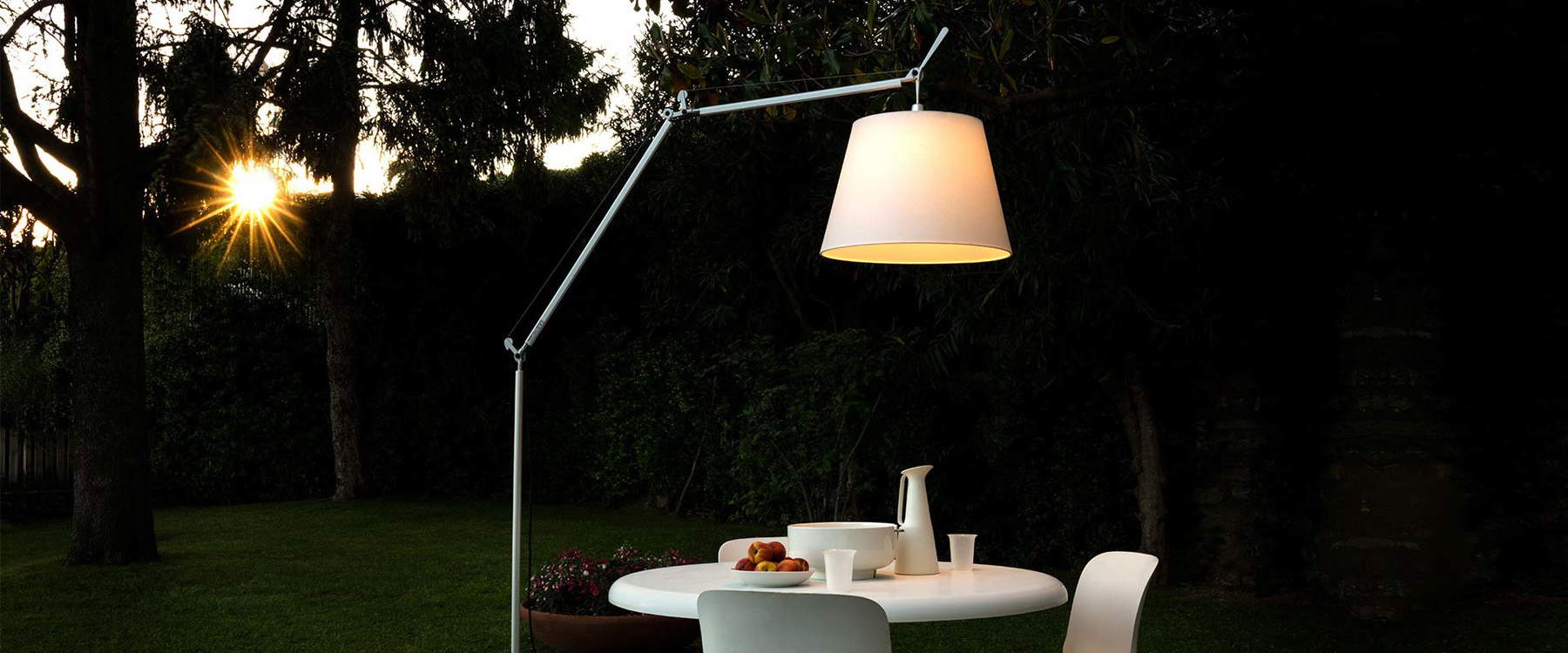
First presented in 1987 at the Euroluce exhibition in Milan, Tolomeo was immediately a huge success, and even De Lucchi has never really been able to explain the reasons why, as he has always stated. It was a success that both overwhelmed and surprised him: perhaps it was because of the shape of the lamp, perhaps because of the way he revisited a traditional idea, perhaps because it was also a very personal project (the designer revealed that he wanted to create a lamp according to his taste, one that would be suitable for his drawing table, a lamp that in short he felt was “his own”), perhaps because of its innovative mechanism (De Lucchi himself is reported to have said: “I designed the Tolomeo in 1986: perhaps I should say I invented it, because in fact, the idea of a new mechanism was born before the lamp”), it is a fact that Tolomeo also came to win, in 1989, the Compasso d’Oro: “for the recovery of a traditional image together with the high technological and performance content” (this was the motivation of the jury).
The Tolomeo is now recognized as a timeless design product that combines functionality, aesthetics and sustainability. Thanks to its versatility and elegance, the Tolomeo Lamp adapts to any environment and any furnishing style, becoming an indispensable element for anyone wishing to illuminate their space with style and class. Numerous versions have since been derived from it: the Tolomeo Terra, a floor lamp with a long adjustable arm; the Tolomeo Parete , which can be fixed to the wall; the Tolomeo Maxi, a larger version of the basic creation (while, conversely, the Ptolemy Mini is the scaled-down version), and then again the small Tolomeo Pinza that can be attached to any surface, the slender Tolomeo Braccio, the Tolomeo Faretto that revisits the concept of the wall sconce, the Tolomeo Mega and the Tolomeo Micro (the former with a large shade, the latter with a small diffuser). There is no shortage of outdoor versions such as the Tolomeo XXL, the Tolomeo Paralume, and the Tolomeo Lampione , which is the only one in the family to have won an award (the Wallpaper Design Award in 2017). This enormous versatility stems from the fact that De Lucchi conceived each component of the lamp as a piece independent of the others, so that even the shade alone can be a lamp in its own right: hence, the many variations, suitable for both classic and traditional settings.
Finally, one last curiosity remains: to what does the Ptolemy owe this curious name? It is in fact named after the Greek astronomer Claudius Ptolemy, known for his work Almagest, a treatise on astronomy that describes the solar system and the fixed stars. The idea behind the lamp’s name comes from the inspiration of its designers, Michele De Lucchi and Giancarlo Fassina, who wanted to create a product that would combine the precision and balance of scientific instruments with the elegance and functionality of a piece of furniture. “The name,” said De Lucchi, “was decided the night before it was presented at the Salone del Mobile. Ernesto [Gismondi] used to make a list of names every year, and Ptolemy seemed to us the most suitable character to represent the lamp, because he was an astronomer, a mathematician, in short he was the one most suited to the idea of a scientific mentality.” Thus, the name “Ptolemy” represents the union between the precision of science and the creativity of design, which are key features of the lamp. Moreover, the name also perhaps recalls the idea of a lamp that illuminates and guides, like the stars that Ptolemy studied and catalogued in his astronomy treatises. More than a lamp: De Lucchi would speak of “a formula, a product philosophy.”
Warning: the translation into English of the original Italian article was created using automatic tools. We undertake to review all articles, but we do not guarantee the total absence of inaccuracies in the translation due to the program. You can find the original by clicking on the ITA button. If you find any mistake,please contact us.





























